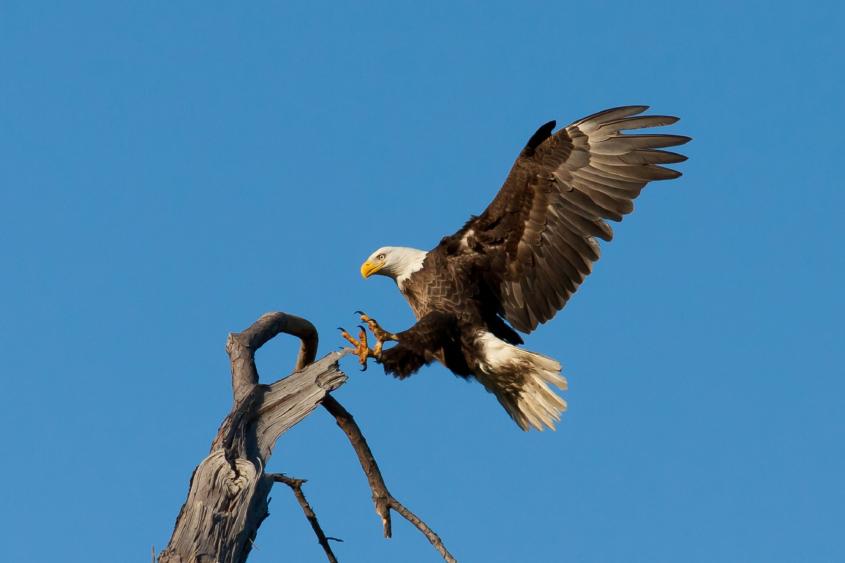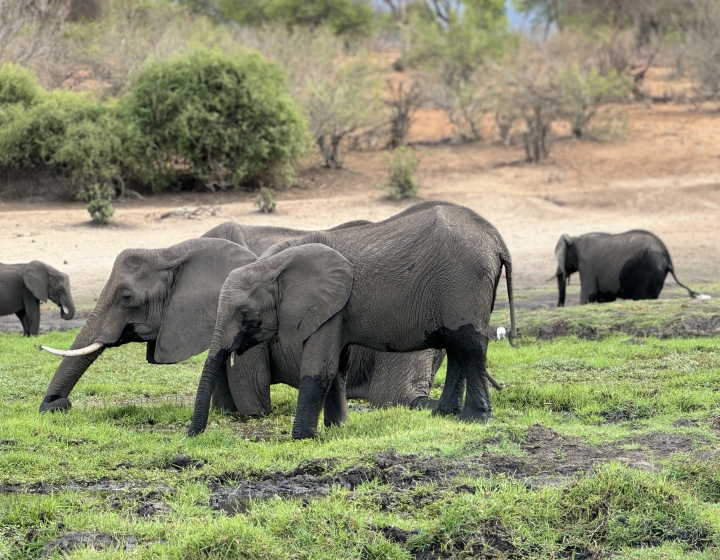Eagles in peril: Lead poses unseen danger to both birds and humans
Bald eagles have made a successful comeback since their numbers dwindled due to human pressures in the early 1900’s. However, the charismatic national bird is threatened once again, this time from a different human-driven cause: lead. The New York State Wildlife Health Program (WHP) worked with the New York State Department of Environmental Conservation (NYSDEC) to gather information on the issue, discovering that, in over 300 bald eagles tested for lead over the last 22 years, 17% had lead levels high enough to cause death from lead poisoning. Overall, 83% had exposure to lead. “Eagle populations have rebounded, but lead is still a risk particularly to the adult, breeding-age birds” said Dr. Krysten Schuler, wildlife disease ecologist with the WHP.
The impact of lead on wildlife and the environment has been an issue for more than two decades. Wildlife losses due to lead poisoning, particularly in raptor species, has been linked to lead ammunition. Bald eagles and other scavenging birds can pick up spent lead from the environment or in carcasses that have been shot with lead ammunition. The federal government instituted a national ban on the use of lead shot for waterfowl hunting in 1991 because an estimated one million ducks and geese were dying annually from accidentally ingested lead. However, lead is still routinely used in some ammunition and fishing tackle.
For the WHP and the NYSDEC, the next step in the bald eagle project is to fingerprint the sources of lead in bald eagle mortalities using lead isotope analysis. With this information, the two groups will collaborate with Northeast states and provinces to conduct a meta-analysis of demographic and spatial data to identify patterns associated with lead poisoning.
In a concurrent effort to address the issue, the NYSDEC works to educate the sporting community about the consequences of lead and encourage use of non-lead alternatives. They also emphasize the fact that lead doesn’t just hurt wildlife—human health is seriously threatened also. “Eating meat from wild species, such as venison, may present a risk of lead ingestion if the animal was shot with lead ammunition,” says Schuler. “People are exposed accidentally because they ingest small, unnoticed pieces of lead that fragment off of bullets used to kill the game. That ingested lead is then dissolved by acids in the stomach and enters the blood stream.”
Because lead causes irreversible neurological damage, pregnant women and small children are the most at risk. However, adults can be harmed as well: low levels of lead can cause high blood pressure, heart disease, kidney disease, reduced fertility, depression, irritability, and memory loss—to name just a few conditions. This ongoing concern caused the NYS Dept. of Health to issue a notice last year to food pantries that provide donated venison. “Steps are being taken to protect people and animals from lead, but our hope is that awareness increases around this issue, as there is definitely more work to be done,” says Schuler.

The NYS Wildlife Health Program is a partnership between the Cornell College of Veterinary Medicine’s Animal Health Diagnostic Center and NYS Department of Environmental Conservation (NYSDEC) that examines wildlife mortalities.






